From the search for new dinosaur skeletons in the "Badlands" of Wyoming, to the push to return humans to the Moon for the first time since 1972, here's a festive selection of the best science and environment long reads published by the BBC this year.
Mission Jurassic: Searching for dinosaur bones By Jonathan Amos
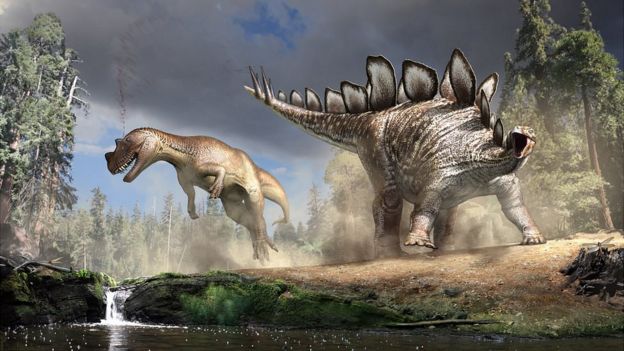 BOB NICHOLLS
BOB NICHOLLS
This year, a team of scientists began an audacious dinosaur hunt.
They have started to excavate a square mile (260 hectares) of land at a secret location in the "Badlands" of Wyoming - and have already discovered a treasure trove of bones.
The researchers hope it will give them an unprecedented understanding of the dinosaurs that lived 150m years ago, and could help to solve the mystery of how these Jurassic beasts grew so huge.

Electric car future may depend on deep sea mining. By David Shukman
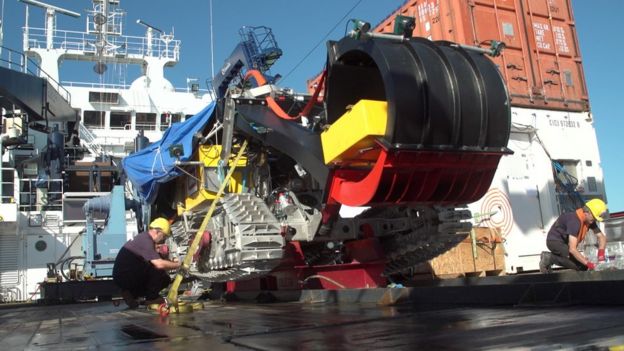
The future of electric cars may depend on mining critically important metals on the ocean floor.
That's the view of the engineer leading a major European investigation into new sources of key elements.
Demand is soaring for the metal cobalt - an essential ingredient in batteries and abundant in rocks on the seabed.
David Shukman visited a ship off the coast of Malaga in southern Spain, where a prototype mining machine was being lowered to the seabed to test the extraction of precious minerals.

Chernobyl: The end of a three-decade experiment By Victoria Gill
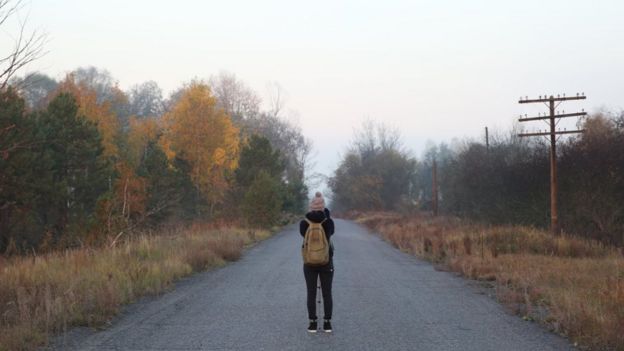
After the explosion at the Chernobyl nuclear power plant in 1986, an area of more than 4,000 square kilometres had to be abandoned.
The accident turned this landscape into a giant, contaminated laboratory, where hundreds of scientists have worked to find out how an environment recovers from nuclear catastrophe.
An exclusion zone- covering more than two thousand square kilometres - was established around the plant. Its purpose was to protect the public and reduce the spread of radiation.
But, as the BBC's Victoria Gill found out, talks have been underway to re-draw the boundaries of this zone.

To the Moon and Beyond By Paul Rincon
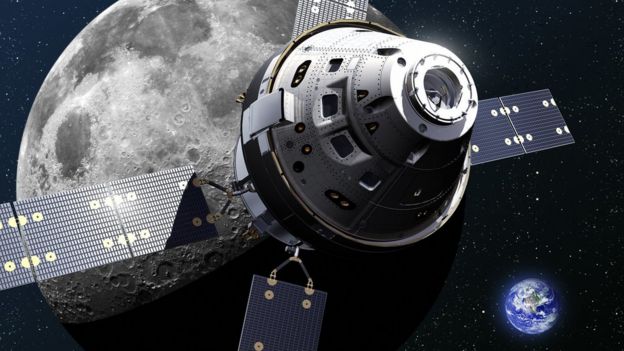 LOCKHEED MARTIN
LOCKHEED MARTIN
The White House wants to send Americans back to the Moon by 2024. This mission will be the first to land humans on the lunar surface since 1972.
But this time, Nasa plans to do things differently. The Orion spacecraft, which will carry astronauts on their lunar journey, superficially resembles hardware used in the Apollo era. But it's packed with technology that was unimaginable in the 1960s.
The agency also plans to build a space station in lunar orbit, called Gateway, which could act as an operations control centre.
But can Nasa safely mount a return mission in just a few years, given that some critical hardware has neither been built nor flight-tested?

Twelve years to save the planet? Make that 18 months. By Matt McGrath
 CLINTSPENCER
CLINTSPENCER
In July, Matt McGrath wrote about a growing consensus that the subsequent 18 months were critical for the climate crisis.
More than five months have now elapsed and, after a compromise at the UN climate conference in Madrid, the urgency is even greater.
Among experts on the climate, there's a sense that 2020 is the last chance saloon for protecting our planet from the dangerous effects of climate change.
The UN's climate conference in Glasgow next year - COP26 - could be a pivotal moment.
But because the summit in Madrid failed to clarify so many key issues, the talks in Glasgow have a mountain to climb.

How much warmer is your city?By BBC Visual and Data Journalism team
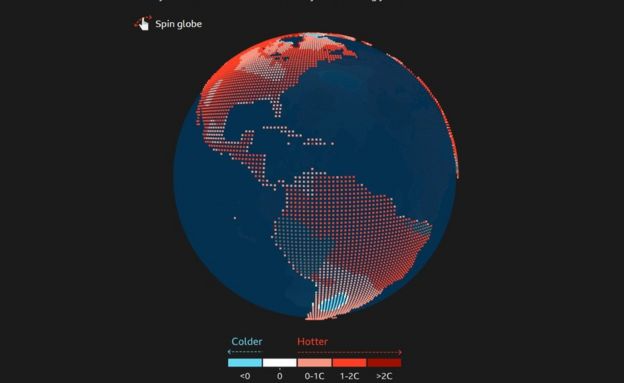
The world is getting hotter. July 2019 was one of the warmest months ever recorded - and July temperatures almost everywhere on Earth have been higher in the last 10 years compared with 1880-1900.
Find out how the temperature in 1,000 major cities across the world has changed already and how much it could rise by in the coming years.

Climate change: Your choices have a ripple effect. By Justin Rowlatt
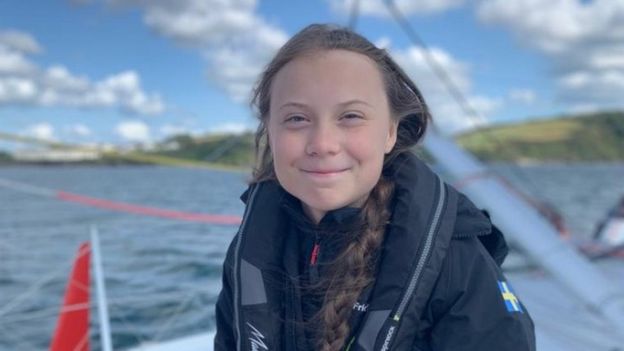
Is individual action pointless in the face of climate change?
What difference does one person forgoing a lamb chop for a lentil bake make if the other 7,699,999,999 of us humans here on Earth don't do anything?
But 16-year-old climate activist Greta Thunberg made headlines this year when she opted to travel to climate change meetings in New York on a racing yacht rather than fly there.
Ms Thunberg told the BBC the point was just as much about sending a signal to those in power as it was about individual contributions to tackling the climate crisis.

The teenagers saving Madagascar's wildlife By Victoria Gill
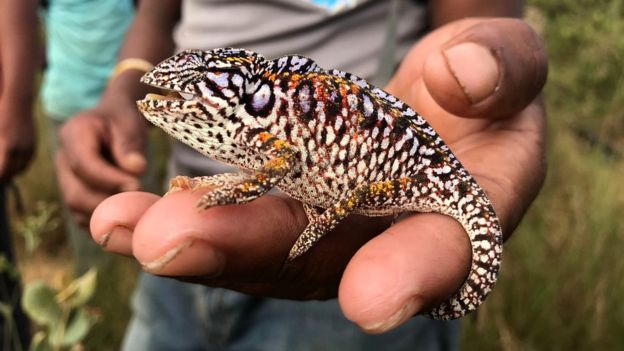 VICTORIA GILL
VICTORIA GILL
The island nation of Madagascar has a dubious accolade: it is the world leader in deforestation.
In 2017 alone, 500,000 hectares were cut down - half a million football pitches of rich, diverse rainforest.
It is home to species threatened by the pet trade, which will go extinct in the next few years if things don't change.
Now, some of the island's teenagers are mobilising to stop food production from destroying the island's rich rainforest ecosystem.

Microplastics: Seeking the 'plastic score' of our food. By Helen Briggs
 GETTY IMAGES
GETTY IMAGES
Microplastics - defined as plastic chunks that are smaller than 5mm - are found everywhere on Earth. But we know surprisingly little about what risks they pose to living things.
There are many unanswered questions about the impact of these tiny bits of plastic, which come from larger plastic debris, cosmetics and clothes.
What's not in dispute is just how far microplastics have travelled around the planet in a matter of decades.
Scientists are now racing to investigate some of the big unanswered questions.

The vast sand scheme protecting the Norfolk coast. By Rebecca Morelle
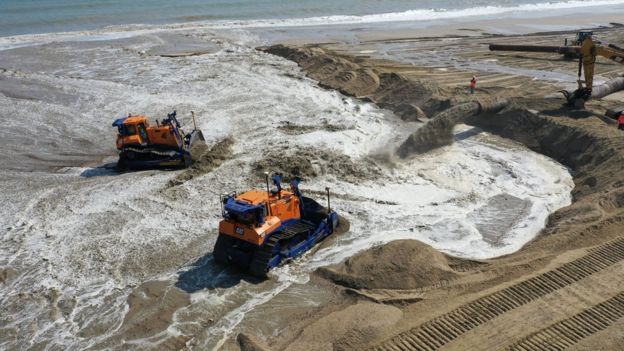
A huge "sandscaping" scheme has been carried out in the UK, on the eroding Norfolk coastline.
Engineers created a 6km-long dune to protect Bacton Terminal, which supplies one third of the UK's gas.
The station is teetering just metres from a cliff edge. But the project is also intended to protect two nearby villages.
The Norfolk coastline is losing land every year as part of natural geological erosion. When big storms occur, several metres of coastline can vanish at once.





No comments:
Post a Comment